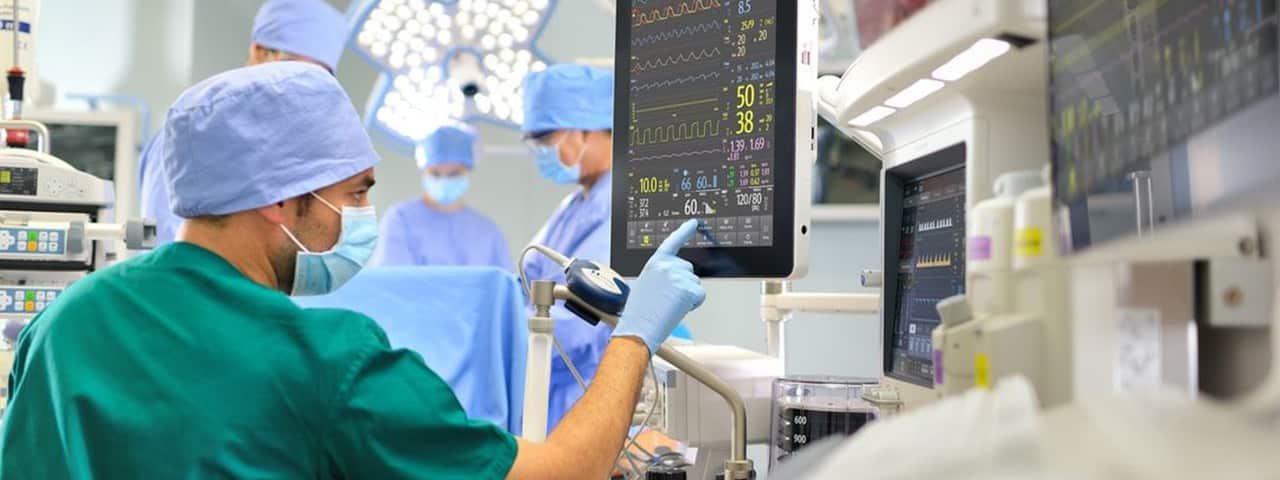Check our training modules that feature a variety of different vet surgical courses depending on your field of specialization
Veterinary surgery is progressing at a very rapid rate. I have been thinking of factors which have contributed to this rapid progress.
Advances in human medicine mean that state-of-the-art equipment is available on the second hand market
Rapid advances in human medicine mean that equipment intended for the human market very quickly becomes obsolete. In this litigious society, human hospital administrators feel that they have an obligation to their human patients to have absolutely the most advanced equipment for their patients. This has caused an influx of nearly new equipment to flood the second-hand market, lowering the price for veterinary practices. I am aware of some veterinary schools getting second-hand surgical robots which cost over $3 million dollars, acquired at nearly no financial outlay, having to pay only for the service contract.
Collaboration with human doctors
There has been a recognition by human medical investigators that spontaneous disease in animals allows clinically relevant research to be performed at lower cost and reduced risk to human patients. This means that animals get the benefit of state-of-the-art treatments, often at reduced or no cost while providing a huge benefit to humans. This allows more rapid progression from the laboratory to the bedside for both humans and animals. Because of concerns over animal welfare, the use of laboratory animals for medical research is becoming progressively more difficult. The use of spontaneous diseases in veterinary patients circumvents this problem.
More availability of sectional imaging
Almost all veterinary specialty hospitals in developed countries have advanced sectional imaging (CT and MRI). This has emerged from reduction in the initial investment, the recognition that these can be self-sustaining profit centres in most hospitals, the increased availability of second hand equipment and the fact that human imaging companies recognise the financial benefit of catering to veterinary practices. Advanced imaging in veterinary practice has resulted in recognition and further characterisation of disease conditions in animals which were either misunderstood or underdiagnosed. This results in earlier diagnoses, better selection of treatment plans and identification of patients which have a poorer prognosis and for which treatment is inappropriate. All of these factors result in better outcomes for patients which are being treated.
More evidence-based objective assessment of outcomes and the quality of veterinary publications
Veterinary researchers are getting more skilled at designing research projects and retrospectively reviewing prior publications to determine the quality of research and therefore the reliability of the results. This has allowed us to more rapidly advance the field and to question the results of traditionally accepted dogma which was based on faulty research methods.
Economic factors
Generally, the economy in developed countries has been improving over the last decade, with pet owners having more discretionary income. As a result, people are spending more on their pets. This has led to a larger percentage of pets with major health problems being referred to specialist.
The percentage of pet owners having insurance is on the rise. In 2018, about 6% of pets were insured in Australia. As a specialist hospital, we see a larger percentage of insured pets because people with pet insurance are more likely to seek referral. Traditionally, pet owners have had to pay the veterinary practice in-full and then to seek reimbursement from the insurance company. There is a new service called “Gap Only” wherein the insured pet owner only has to pay the excess (the gap) and the insurance company pays the veterinary practice the remainder directly. This increases convenience for the owner and gives them the assurance that they are not going to be out of pocket for thousands of dollars.
Specialised equipment for veterinarians as opposed to adapting human equipment
Given the increase in expenditure on pets in developed countries, companies which have traditionally focussed exclusively on human medicine now have veterinary divisions. This means that instead of having to adapt human surgical equipment, veterinarians are getting device lines which are customised for use in animals. Animals are benefitting from 3d modelling, 3d printing and milling machines traditionally only available to human surgeons and patients. These improvements have resulted in quicker surgeries and improved outcomes. Also, veterinary-specific lines are often less expensive than human lines because of cost savings from reduced need for liability insurance, often a significant portion of operating costs.
More awareness amongst the pet-owning public of specialist centres and procedures.
Through pet-owner to pet-owner social media, YouTube and network television programs, people are demanding more advanced procedures as well as referral to specialists. The focus by the mainstream media is shifting from focussing on the oddity of some “crazy person” spending $25,000 on his cat to the amazing advances that are available to pets with serious injuries and diseases. This has mirrored the shift of the family pet from the farm, to the back yard, to the laundry, to the living room, to the bedroom, onto the bed, to under the covers and on the pillow.
Advent of sub-specialist fellowships in surgical oncology, maxillofacial surgery, minimally invasive surgery, orthopaedic surgery, sports medicine.
The American College of Veterinary Surgeons has started recognising subspecialisations in various fields which recognise further training and expertise beyond the standard surgical residency and specialisation. Standardisation of training programs contributes to furthering knowledge in the fields of veterinary surgery. This shift lags behind the same thing which has happened in human medicine over the past 50 years.

